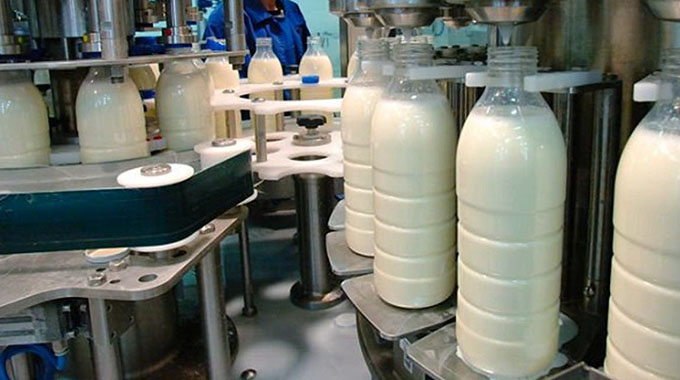
The country’s raw milk production in the first five months to May declined by 3 percent to 31.35 million litres from 32.22 million litres in the same period last year, official data shows.
Milk production in the country has been on a steady increase since 2009.
However, successive droughts continue to stifle the potential of the lucrative dairy sector.
Latest data from the Ministry of Agriculture’s dairy services department, shows that milk intake by processors was down 3 percent to 28.36 million litres from 29.19 million litres in the same period in 2019.
In the same vein, retailed milk by producers marginally declined from
3.02 million litres recorded in the prior period last year to 2.99 million litres.
In May this year, raw milk production fell by 8.11 percent to 6.11 million litres compared to 6.65 million litres in the previous period.
January output at 6.83 million litres is the highest so far followed by March output at 6.32 million litres. April output is ranked the lowest at 6.01 million litres, largely attributed to water shortages.
Zimbabwe’s monthly milk requirement stands at 10 million litres, but in May only 6.11 million litres were produced.
The Zimbabwe Association of Dairy Farmers (ZADF) chairperson Kudzai Chirima said the continuous droughts experienced in the last three years does not “encourage growth” as dairy farmers rely mainly on maize and soya output and cotton cake.
“There is need to make sure that the irrigation has been improved and that every single dairy farm is able to have green grass throughout the year,” he said.
Zimbabwe’s milk output growth has been averaging 8.3 percent (68.94 million litres) in the last five years, with 2019 recording the highest output of 79.89 million litres despite the adverse effects of the El Nino induced drought, which had an impact on milk yields.
Milk output rose 6 percent to 79.89 million litres in 2019 from 75.42 million litres recorded in 2018. But, the output missed the target of
100 million litres by 20.21 percent. It is also lower than the national consumption of 130 million litres.
The dairy sector continues to face a plethora of challenges such as high cost of feed to subsidize the low stocks of hay and also lack of long-term funding. In addition, factors such as shortage of water and stock feeds as well as erratic rains are also negatively impacting production.
The dairy herd stands at 38 000 and of these, 12 000 are in milk, producing an average of 14 litres per cow per day. – New Ziana/BH.
